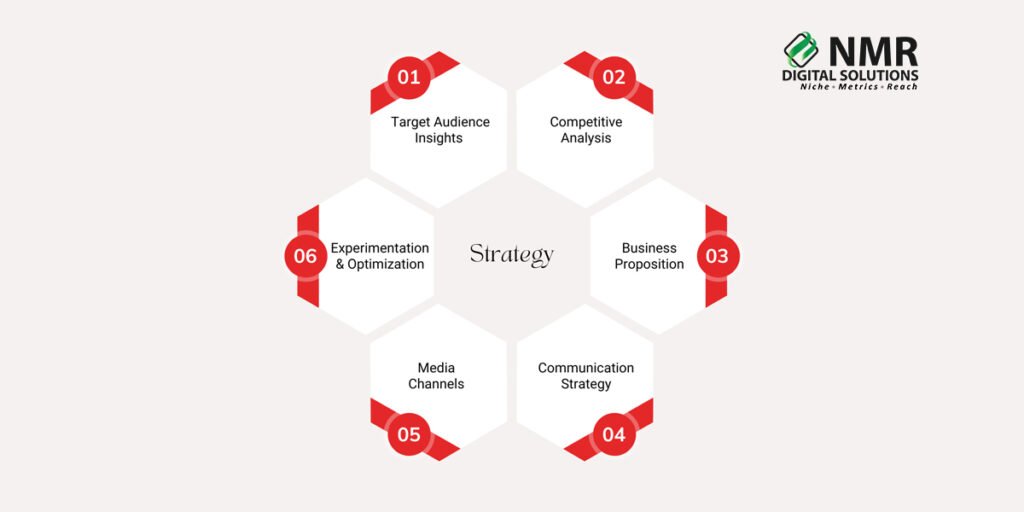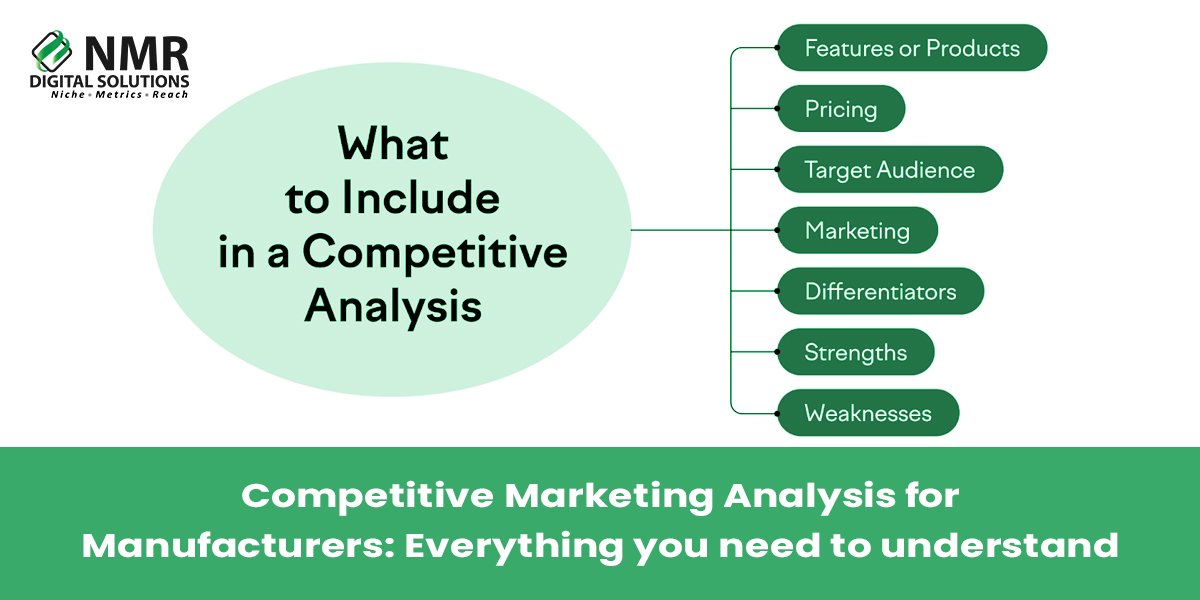Amidst the spirited competitive nature of the manufacturing world today, survival has been the name of the game, yet staying ahead of your competition is what remains a core necessity. Sustainable manufacturers will, therefore, ultimately glean the much-needed insight to enable informed decisions, optimization of strategies, and further seizing the existing market opportunities through successful competition marketing analysis. Here are six key steps to run a comprehensive competitive marketing analysis for manufacturers successfully.

1. Identify your main competitors.
Competitive Marketing Analysis starts with the identification of key competitors—the firms that produce similar products, target the same customers, and do business in the same geographic arenas. Competition comes in three basic configurations:
Direct Competitors: These are the companies whose businesses are in the same industry as yours and target the same customer base. For example, if your company is into manufacturing of automobile parts, then other players in the same industry are your direct competitors.
Indirect Competitors: This implies companies that offer different products or services but fulfill the same customer needs. In case, you manufacture solar panels, companies making other forms of renewable energy solutions would be your indirect competitors.
New Entrants: Potential competitors that may enter in future. Monitoring emerging market trends and new company establishment to help you anticipate and prepare for new competition.
Hint: To help identify key competitors, you may use market research reports, industry publications, and online search engines.
Having your list of competitors ready, analyze the kind of products and services they are selling. You are supposed to understand what they are offering, features and benefits of their product, pricing strategies, and how they position them in the market. Key factors to put in consideration include:
What product feature or innovation is so unique about your competitors’ products that distinguishes them from your own offerings?
Quality: Evaluate competitors’ product quality. Have they adopted better materials or techniques for manufacturing?
Price: Study what is the nature of pricing your competitors have adopted. Are they underpriced to acquire market share or overpriced to be a niche player?
Customer service: How much customer service does the competitor award to its customers? How do they handle customer inquiries or complaints and provide support?
Hint: Mystery shop or visit competitor websites and product catalogs in order to gather specific information about their products and services.

Step 3: Competitors’ Marketing Operations
You should have some feel about how your competitors are selling their products. In this part of their marketing operations, look at the following:
Advertising: Where do your competitors advertise? Are they focused on digital marketing? Do they emphasize traditional media, or do they use both?
Brand Positioning: How does your brand manage its position in the market against competitors? What type of messaging do they boast in an effort to target their audience?
Content Marketing: Check the quality and effectiveness of the competitors in content marketing: blogs, whitepapers, or case studies published by competitors. Evaluate how attractive and informative the competitor content is.
Social Media: Monitor their presence on social media and the type of content they are sharing with their followers.
Tip: Check their marketing and advertising statistics on the websites for competitors’ analysis and use online tools such as SEMRush and Ahrefs.

4. Evaluating Sales Channels of Competitors
The way in which competitors sell is a treasure trove of information about their business strategy. Review the distribution channels and methods competitors use to sell to their respective customers.
Direct Sales: Do competitors sell directly to customers utilizing their own people or through online channels or does competitor have a store front?
Distribution Networks: Are the competitors using distributors, wholesalers, or third-party retailers to reach out to the customers? How extensive is their distribution network?
E-commerce: Mark down online sales platforms. Do they work through marketplaces such as Amazon or Alibaba, or are sales based on their e-commerce site?
Alliances: Take note of any strategic alliances that your competition has with other firms, such as joint ventures or partnerships that increase their reach.
Hint: Monitor recent industry reports, competitor press releases, and online sales platforms to know more about the sales channel and distribution strategies.
5. SWOT Analysis of Competitors
Through a SWOT analysis of your competitors, you should be able to know exactly what areas they are strong in and those upon which they are vulnerable. Here are a few things to consider:
Strengths. What are the main strengths the rivals have? These might revolve around a certain reputation of the brand, quality of the products, loyal customers, or even advanced technology they use.
Weaknesses. How are your rivals weak? That might entail things like product weaknesses, high prices of commodities, poor customer service, or limited geographical market by your competitors.
Opportunities: Which of the market opportunities is your competition leveraging that you can also cash in on? Are there budding trends or unserviced customer segments?
Threats: What external threats may have an impact on the success of your competitors? It could be recessionary trends, changes in regulations, or new entrants into the market.
Tip: Use this analysis to identity gaps in the market which you can exploit and also where you can outperform them better.
6. Keep a Constant Watch on Competitors
Competitive marketing analysis is not a one-off; it is an ongoing exercise. Carry out regular monitoring of competitor activities, such as new product launches, marketing campaigns, pricing shifts, and any news in your industry. Some of the useful tools include Google Alerts, subscriptions to otherwise paid-for industry news, and competitor benchmarking reports.
Tip: Set up a competitive intelligence system in your firm for constant gathering and analyzing competitor data. This will keep you highly responsive to changes going on in the market and be able to adjust your strategies in time.

Conclusion
Competitive marketing analysis for manufacturers is important for staying ahead in the market. The following six steps allow the observer to draw valuable observations that will inform strategic decisions on outperforming the competition: Identify key competitors. Analyze their products and services. Assess their marketing strategies. Evaluate their sales channels. Analyze their strengths and weaknesses. Monitor constantly. Be proactive and use this guide to proactively build a robust competitive analysis process from which your business can draw the insights to maintain itself on the path of success.
